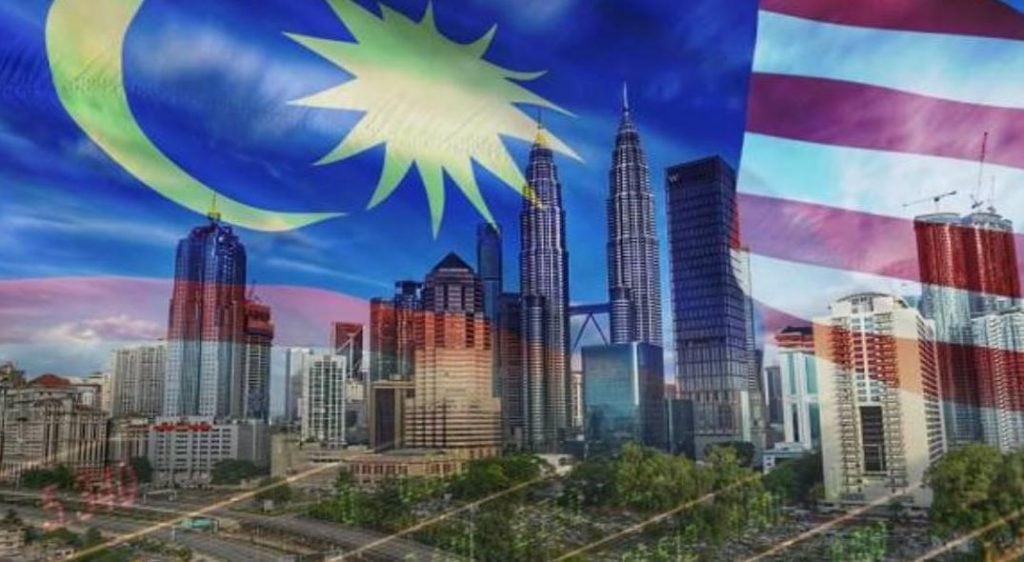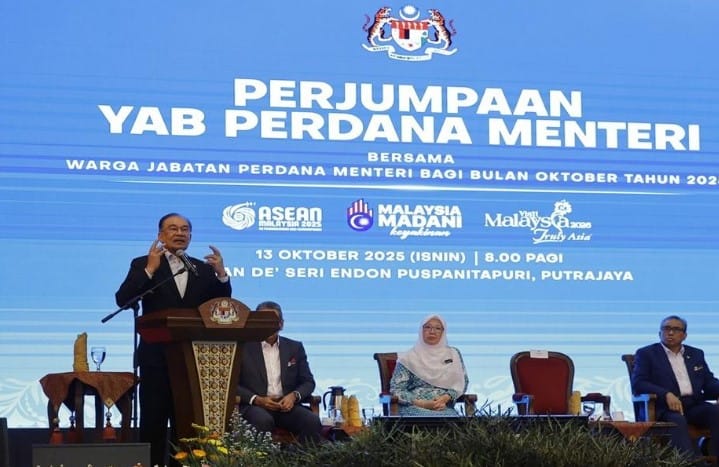
LONDON: Who would have thought that a little-known pathogen would be the party pooper as the world sees in the New Year! A novel coronavirus (COVID-19) put a dampener on celebrations the world over including Malaysia as the virus continues its spread globally with more than 80 million confirmed cases in 190 countries and nearly two million deaths.
The virus is surging in many regions and countries that had apparent success in suppressing initial outbreaks are also seeing second waves of infections exacerbated by the emergence of tens of variant mutations, of which two unrelated but highly infectious strains have been identified in the United Kingdom and South Africa.
The clear and present danger is the super spreading of these strains globally as with the original strain in Wuhan, China, and subsequent ones in Italy and Spain. Not surprisingly, even the UK’s much-admired National Health Service (NHS) is under severe strain by the record number of new infections, admissions and deaths, characterised by the archetypal mixed message: “Together into a stormy but hopeful New Year.”
Even the World Health Organisation (WHO) saw fit to reiterate its guidance to its member governments and the public at large on New Year’s Eve on international travel using a risk-based approach, on the rational use of PPE, on COVID-19 treatments, on global risk communication and community engagement strategy especially during an infodemic of disinformation about the virus and vaccines, and even on how to hold safer local and general elections due in several member countries.
Lest anyone dare to cast doubt on the reality let alone severity of the pandemic by New Year’s Eve, according to WHO, almost 82.8 million people worldwide had caught the virus with 1.8 million people perishing and the United States, India and Brazil recording the largest number of confirmed cases and deaths. Globally, there were 755,094 new cases confirmed on New Year’s Eve. Malaysia’s tally of confirmed cases reached 119,077 on Jan 3.
The initial euphoria surrounding the roll out of vaccines to combat COVID-19 may have lulled us into a false sense of security. The hope is that the spate of vaccines now emerging, including the Pfizer/BioNtech, Asra Zenica/Oxford, Sinopharm and ones in Iran and Russia, would fast track the containment and eventual eradication of the virus, was quickly tempered by the sheer logistics of distributing and vaccinating a global population in excess of six billion and the complexities of the interaction of the vaccines with the new variants and any possibility of further mutations, and their efficacy as a virus mitigation tool of last resort.
Containing and living with COVID-19 will continue to define humanity well into 2021 and beyond. The reality is that the COVID-19 pandemic will persist for some time, getting worse in the immediate short term but gradually losing its lust for infecting as the vaccines help build up a global herd immunity. We are eternally grateful to the scientists, doctors, epidemiologists and virologists for their ingenuity, resilience and determination of in formulating these vaccines in record time.

The pathogen, declared a global pandemic by WHO in March 2020, spread like wildfire, leaving no continent untouched and bringing the world to its knees, resulting in the worst global economic crisis since the Depression in the 1930s.
If 2020 is defined by COVID-19 and pandemic paralysis, what has 2021 in store for Malaysia?
Against a global background, governments committed over US$11.7 trillion in economic stimulus packages, leading, according to the World Bank, to an increase in fiscal deficits by an average of 9% of GDP, with global public debt projected to approach 100% of GDP by end-2020. According to the IMF, the global economy is projected to contract by 4.4% in 2020 and global trade by 10.4%.
Malaysia addresses pandemic commendably
Malaysian Prime Minister Tan Sri Muhyiddin Yassin and his economic team led by Finance Minister Datuk Seri Tengku Zafrul Tengku Abdul Aziz responded commendably in addressing the pandemic crisis with no less than four stimulus packages worth RM305 billion (US$75 billion) or approximately 20% of GDP aimed at mitigating the impact on lives and livelihoods. These packages are expected to contribute over four percentage points to GDP growth in 2020.
The IMF acknowledges that the “Malaysian authorities responded swiftly to the COVID-19 crisis, with material relief measures for affected individuals and businesses. Nevertheless, the impact on Malaysia’s economy has been substantial, and has added to Malaysia’s fiscal burden, which was already high relative to peers going into the health crisis”.
“Going forward,” maintained Tengku Zafrul in December, “Malaysia is set for a sharp recovery path in 2021. Building on the recovery momentum of the stimulus packages implemented this year, Budget 2021 announced on Nov 6, is expected to contribute to the 6.5% – 7.5% projected growth in 2021.” But how realistic is the finance minister in his optimism and expectations?
From a global context, Malaysia has a much lower per capita COVID-19 infection rate, thanks largely to the socio-economic emergency measures. The country’s economy entered the COVID-19 pandemic from a position of robust economic strength, albeit the impact of the pandemic is projected to see a contraction in real GDP growth in 2020 of between 4.5% and 5.8%.
But according to Nada Choueiri, who led the IMF team in its latest Article IV Consultation with Malaysia and whose final report will be published at end-January 2021, the preliminary conclusions on the Malaysian economy are indeed encouraging: “Real GDP is projected to rebound by 7% in 2021 supported by both domestic and external demand. Exports, which were propped up in 2020 by strong pandemic-related demand for personal protective equipment and electronic products, will continue to underpin growth. But the recovery will be uneven across sectors. Inflation will rise to around 2% in 2021 as electricity tariff rebates expire, fuel prices rise, and domestic demand recovers.”
For the Malaysian economy, like economies the world over, much depends on the uncertainty and the near-term evolution of the pandemic. Putrajaya expects to vaccinate 30% of the population in 2021, based on agreements with vaccine producers such as Pfizer/BioNtech.
Following past crises such as the Asian financial crisis in 1998 and the global financial crisis in 2008, recovery in subsequent years was fuelled by innovative and successive policies such as the introduction of Danamodal and Danaharta to restructure the banking sector and corporate debt in the first crisis. But the subsequent economic growth in the noughties and the first two decades of the new century was driven primarily by robust domestic demand.
To most people around the world, any new normal in 2021 may be just as painful as the ‘old’ normal with the gap between the haves and have-nots ever widening.
Lower classes affected much more
Research shows, not surprisingly, that COVID-19 has primarily impacted the economically lower classes much more, with the rich unscathed. This is true in both developed and developing economies. As such, an essential component of any economic recovery is for the more well-off in society to consume much more to give a much-needed stimulus to the retail and services sector.
In the United Kingdom, the evidence is that Brits spent less and saved more in 2020 as the pandemic led to shops, pubs and attractions being closed down. According to Barclaycard, which tracks almost half of all credit and debit card spending, consumer spending overall was down 7.1%, albeit spending on essential items climbed 4.1%, while independent businesses benefited as many more people shopped locally.
According to another survey from Aldermore Bank, Brits working from home saved an average UK£110 a week from not commuting, spending on breakfasts and lunches, not socialising with work colleagues, avoiding takeaway coffees and not going out over the weekends.
Research by Moneysupermarket suggests that two-thirds of Brits saved an average of UK£586 per month in 2020 – equivalent to UK£7,032 over the course of the year. The dichotomy is that while this frugality brought benefits such as better control of personal finances, better air quality due to restrictions on car travel and import of perishables air-freighted from abroad, those with high levels of disposable income may be cajoled into greater consumption as a test of loyalty to the nation and its economic recovery.
This is true of all the developed and emerging economies, and Malaysia is no exception. Whether this domestic demand is fuelled by savings or through leverage is the important question? The latest disclosures from Bank Negara Malaysia (BNM) show that outstanding household loan growth grew by 5.0% in November 2020 (October: 5.1%) as disbursements sustained and remained higher than the historical average at RM29.7 billion (2017–2019 average: RM27.8 billion).
There are green shoots of hope sprouting elsewhere which have a direct impact on the global economy and regional ones such as Malaysia. On the global scene, Joe Biden’s election as the new US president could be the game-changer, replacing a dysfunctional incumbent who was a bane to most of the world. It could impact positively on a COVID-19 vaccination rollout which in turn could kickstart the pace of global economic recovery and its knock-on effect on the South East Asian economies.
The UK-EU trade deal and China’s economic recovery, similarly, could help ease Malaysia’s burden and improve prospects as two of its long-standing trade and investment partners with the promise of larger trade flows and new FDI inflows.
Malaysia’s fundamentals raise optimism
Malaysia’s economic fundamentals in several areas increase optimism for a more orderly return to an envisaged rebound growth trajectory in 2021.
BNM, in its latest Disclosure of Malaysia’s International Reserves, published under the IMF’s Special Data Dissemination Standard (SDDS) on Dec 31, 2020, confirmed that the country’s official reserve assets amounted to US$105,336.2 million, while other foreign currency assets amounted to US$1,511.3 million as at end-November 2020.
Projected foreign currency inflows amount to US$2,438.4 million in the next 12 months. The only contingent short-term net drain on foreign currency assets is government guarantees of foreign currency debt due within one year, amounting to US$327.6 million.
“There are no foreign currency loans with embedded options, no undrawn, unconditional credit lines provided by or to other central banks, international organisations, banks and other financial institutions. Bank Negara Malaysia also does not engage in foreign currency options vis-à-vis ringgit,” said BNM. This means that as at end-November 2020, Malaysia’s international reserves remain usable and sufficient to finance 8.8 months of retained imports and are 1.2 times total short-term external debt.
Other Malaysia-specific November metrics which point to an improved economic outlook and growth trajectory include a strong performance in the electrical and electronics (E&E) and manufacturing industries fuelled by robust global demand for semi-conductors and rubber gloves and products for clinical use.
According to BNM, Malaysian banking system capitalisation levels remain well-positioned to absorb earning shocks and support intermediation activity. Indeed, it is to the credit of BNM that Malaysian banks are now significantly more resilient to shocks compared to previous crises. In particular, the strong banking system buffers built over the years and sound risk management practices are expected to mitigate the impact of a potential deterioration on credit quality and continue to support lending by banks to the economy. Notably, banks’ excess capital buffers, according to BNM, currently stand at RM123.7 billion, more than three times the levels seen during the 2008/09 Global Financial Crisis.
“The improved risk appetite,” reminds BNM, “also led to continued non-resident inflows to the domestic bond market following yield-seeking activities by investors, which contributed to an appreciation of the ringgit against the US dollar by 2.2%.”
Tengku Zafrul, in response to Fitch Ratings ‘temporary’ downgrade of sovereign Malaysia’s long-term ratings to ‘BBB+’ from ‘A-‘ with a ‘stable’ outlook in early December, was in fighting mood defending “our excellent track record of economic resiliency supported by a well-diversified economy, favourable export dynamics and a solid pipeline of infrastructure projects with strong growth multipliers. These strengths have enabled Malaysia’s average GDP growth to rank amongst the top 20% globally between 2015 and 2019”.
The conundrum for Malaysia is not its economic management, the stability and strength of its financial sector and the close monitoring of risks per se; it is the downside risks of external factors such as the state of the US economy, the Fed interest rate policy, the US trade spat with China, and domestic factors such as fast tracking vaccine rollout, pre-empting a third wave of COVID-19 variant infections and enacting governance reforms especially relating to the rule of law and corruption in law, and fostering a Green, ESG and sustainable growth agenda on which Malaysia has a head start compared with peer countries.
The carrot at the end of the tunnel is not merely a brighter future for Malaysians but the country achieving the holy grail of high-income status.
To millions of Malaysians, the 2021 message is loud and clear – do not risk tomorrow’s recovery and return to prosperity with the temptation of individual shortcomings, hubris and movements with no controls!
— BERNAMA





More Stories
Nation Recovers RM15.5 Billion Of Its Revenue, War Against Corruption And Cartels To Go On – Anwar
Budget 2026 Reflects Govt’s Commitment To Integrity, Curbing Leakages – Azam
Dewan Negara Passes Five Bills Including Legal Aid And Public Defence 2025